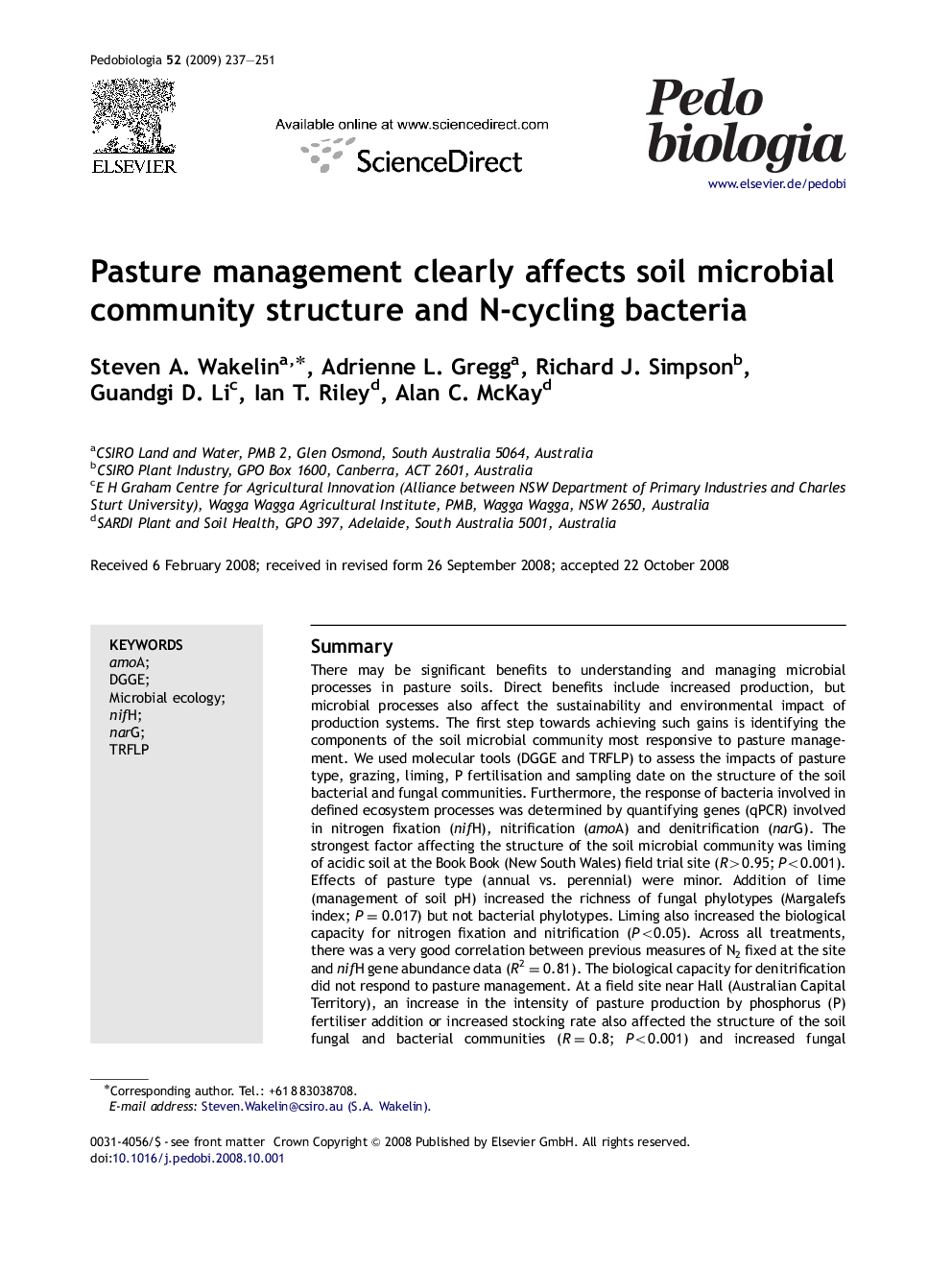| کد مقاله | کد نشریه | سال انتشار | مقاله انگلیسی | نسخه تمام متن |
|---|---|---|---|---|
| 2061319 | 1076453 | 2009 | 15 صفحه PDF | دانلود رایگان |

SummaryThere may be significant benefits to understanding and managing microbial processes in pasture soils. Direct benefits include increased production, but microbial processes also affect the sustainability and environmental impact of production systems. The first step towards achieving such gains is identifying the components of the soil microbial community most responsive to pasture management. We used molecular tools (DGGE and TRFLP) to assess the impacts of pasture type, grazing, liming, P fertilisation and sampling date on the structure of the soil bacterial and fungal communities. Furthermore, the response of bacteria involved in defined ecosystem processes was determined by quantifying genes (qPCR) involved in nitrogen fixation (nifH), nitrification (amoA) and denitrification (narG). The strongest factor affecting the structure of the soil microbial community was liming of acidic soil at the Book Book (New South Wales) field trial site (R>0.95; P<0.001). Effects of pasture type (annual vs. perennial) were minor. Addition of lime (management of soil pH) increased the richness of fungal phylotypes (Margalefs index; P=0.017) but not bacterial phylotypes. Liming also increased the biological capacity for nitrogen fixation and nitrification (P<0.05). Across all treatments, there was a very good correlation between previous measures of N2 fixed at the site and nifH gene abundance data (R2=0.81). The biological capacity for denitrification did not respond to pasture management. At a field site near Hall (Australian Capital Territory), an increase in the intensity of pasture production by phosphorus (P) fertiliser addition or increased stocking rate also affected the structure of the soil fungal and bacterial communities (R=0.8; P<0.001) and increased fungal phylotype richness (P<0.05). Significant shifts in the soil biota also occurred during the growing season (P=0.001). These observations may have been strengthened by the onset of drought conditions from July 2006. Richness of fungal, but not bacterial phylotypes, increased with P fertilisation, stocking rate, and between sampling times (P<0.05). The increase in fungal phylotypes richness was in direct contrast to a reduction in botanical diversity. Temporal variation in fungal richness was positively correlated with monthly rainfall (R2=0.774). The biological capacity for nitrification and denitrification increased with intensification of the system (P<0.05), but the biological capacity for N2 fixation increased with stocking rate only (P<0.05). Overall, results showed that soil biota under pastures, and particularly soil fungi, are highly responsive to agricultural management treatments.
Journal: Pedobiologia - Volume 52, Issue 4, 10 May 2009, Pages 237–251